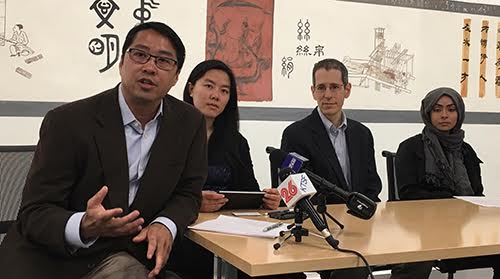Magazine, The Immigrant Experience
May was officially marked as the Asian American and Pacific Islander (AAPI) Heritage Month in 1992 not only to celebrate Asian culture or diversity but also to acknowledge the marvelous role this largest growing racial and ethnic group in the US has been playing to strengthen the country.
History of AAPI Heritage Month
The idea to celebrate the AAPI Heritage Month was hatched by Jeanie Jew, a former Capitol Hill staffer of Chinese origin whose great grandfather MY Lee migrated to the United States from China in the 1800s.
Jew shared the idea with Representative Frank Horton, who moved a resolution to proclaim the 7-day period beginning May 4, 1979, as AAPI Heritage Week in 1978. This resolution became Public Law after successfully passing through the legislative process when President Jimmy Carter signed it in October 1978.
The law demanded American educational institutions as well as ordinary Americans to observe the week with appropriate ceremonies and activities.
In 1992, Congress passed another public law to annually designate May as Asian Pacific American Heritage Month.
Why was May proclaimed as APPI Heritage?
May was designated as AAPI Heritage due to two historic references: May 7, and May 10.
May 7, 1843, marks the arrival of the first Japanese immigrants to the US, while May 10, 1869, recognizes the contributions of some 20,000 Chinese workers in completing the first transcontinental railroad in America. This day is also known as Golden Spike Day in history.
APPI Heritage Month 2022 theme
The Federal Asian Pacific American Council (FAPAC) has selected this year’s theme, “Advancing Leaders Through Collaboration.”
The theme is a continuity of the series that began last year to promote leadership advancement.
The rationale, as communicated by the FAPAC officials, is to highlight the efforts of the organization in advancing leaders in the Federal and DC governments as they believe that diversity at the leadership table helps achieve bigger goals.
How to celebrate APPI Heritage Month?
Over 24 million AAPIs live in the US, represent different rich and diverse cultures, and share exciting experiences with other groups of the American society. Let’s find some of the best ways to celebrate their culture and recognize their contributions to making the US what it is today.
-
Take a virtual tour to Asia and the Pacific
To begin with, celebrating AAPI Heritage Month, the first thing you should do is take a virtual tour of Asia, Hawaii, and the Pacific Islands. For this purpose, you can consult any of the online resources to watch videos or still images of various prominent locations in this region.
-
Learn about the history of Asia and the Pacific
Learning about the history of AAPIs is one of the most important ways to observe the AAPI Heritage Month. You can watch documentaries, read history books, or talk to AAPIs in your circle to know more about their history.
3. Read/listen to citizenship stories
Learn about the path AAPIs traveled in their quest to become American citizens. The Center of Asian American Center has unfolded many citizenship stories, from Bhagat Singh Thind to Tereza Lee. Just visit their website and start learning.
4. Read books about AAPIs
Books are still considered one of the best ways to gain knowledge about something. To mark the AAPI Heritage Month with true spirit, you can read a number of books with AAPI connections available at the website of the Smithsonian Asian Pacific American Center.
Recommended Read: “The Making of Asian America: A History” by Erika Lee
5. Watch a movie
Set a target to watch at least one movie from “Nomadland”, “Minari”, “Parasite”, “Burning”, “Train to Busan”, “Crazy Rich Asians”, “The Farewell”, “Searching”, “Viceroy House”, “Mississippi Masala”, and “Gandhi.”
6. Try Asian and Pacific recipes
From Sushi to Samoan coconut rolls, and from Biryani to Vietnamese chicken salad you can prepare many dishes at home. If you’re not fond of cooking, you can visit an Asian restaurant in your area to try Asian and Pacific cuisine.
Get your child involved in researching and preparing simple dishes based on Asian, Hawaiian, or Pacific Island favorites, from Samoan coconut rolls to Vietnamese chicken salad.
7. Support AAPI communities
The economic crunch in post-Covid-19 America has made the lives of many AAPIs difficult. You can lend a hand to such families or make donations to nonprofit organizations which are working to support deprived AAPIs.
8. Explore Asian and Pacific Art
Asian and Pacific art is rich in nature. You can listen to Asian music, visit galleries showcasing the artwork of Asian artists, or learn about the Japanese art of paper folding online. Another good option is to take off from work and visit the Hindu Temple of Central Indiana.
9. Learn about AAPI stars
You can learn about the lives and struggles of AAPI actors, artists, celebrities, and storytellers to get inspiration. You’ll be happy to know that lives of Bruce Lee, Anna May Wong, and Vincent Chin have been well covered by the Center of Asian American Media.
10. Discover Asian/Pacific Horticulture
You may be surprised to learn that the indigo color is a gift from India. It had been prepared from the Indigofera Tinctoria plant. Moreover, Japanese cherries that can be seen in Washington DC and other states were gifted to the US by Japan in 1912. Learn about bonsai and other Asian arts and the science of cultivating plants.
Conclusion
American history is filled with many incredible stories of persistence, resilience, and of determination. Many of these stories come from the AAPIs, who proved over the time that they were not here to stay, they were an integral part of this society and made worthwhile contributions to strengthen this country. May reminds us of the contributions of these people and provides us with the opportunity to celebrate their history, their culture, and uniqueness.








